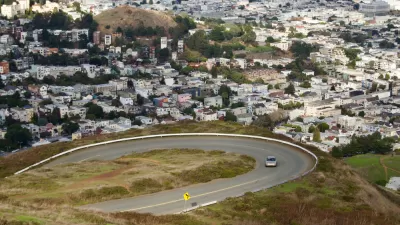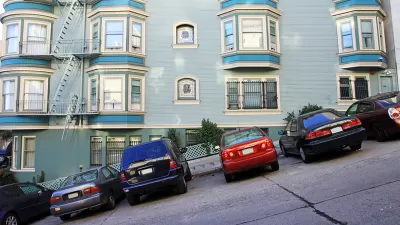Ben Adler considers the availability of car-sharing and cab services in maintaining a car-free population.
Referring to Eric Jaffe's article and David King's blog post, Ben Adler summarizes that cabs and car-sharing services are often part of the public transit infrastructure, not its alternative.
Adler's blog does not address the impact of car-sharing on cab services or vice versa, but uses his personal car-less life to point out that car-sharing is more viable “in areas that are a little less dense and centrally located than, say, Manhattan,” but that “having easily available and accessible cabs is a necessary precondition.”
The on-call, on-time, door-to-door services of both cabs and car-sharing services “make it easier for you to leave your car at home for the day, or possibly get rid of your car altogether.” These services place the cost of each car ride at the time it occurs, forcing you to re-evaluate every car ride: “When you have to drop $30 on a cab or a Zipcar rental, you will stop to ask yourself whether this trip is really worth it — and often you’ll say no.” Whereas, “...once I had a car, it would have made sense to amortize the cost of buying it by using it more frequently.”
FULL STORY: Why cabs and car-sharing are good for the environment

Planetizen Federal Action Tracker
A weekly monitor of how Trump’s orders and actions are impacting planners and planning in America.

Maui's Vacation Rental Debate Turns Ugly
Verbal attacks, misinformation campaigns and fistfights plague a high-stakes debate to convert thousands of vacation rentals into long-term housing.

Restaurant Patios Were a Pandemic Win — Why Were They so Hard to Keep?
Social distancing requirements and changes in travel patterns prompted cities to pilot new uses for street and sidewalk space. Then it got complicated.

In California Battle of Housing vs. Environment, Housing Just Won
A new state law significantly limits the power of CEQA, an environmental review law that served as a powerful tool for blocking new development.

Boulder Eliminates Parking Minimums Citywide
Officials estimate the cost of building a single underground parking space at up to $100,000.

Orange County, Florida Adopts Largest US “Sprawl Repair” Code
The ‘Orange Code’ seeks to rectify decades of sprawl-inducing, car-oriented development.
Urban Design for Planners 1: Software Tools
This six-course series explores essential urban design concepts using open source software and equips planners with the tools they need to participate fully in the urban design process.
Planning for Universal Design
Learn the tools for implementing Universal Design in planning regulations.
Heyer Gruel & Associates PA
JM Goldson LLC
Custer County Colorado
City of Camden Redevelopment Agency
City of Astoria
Transportation Research & Education Center (TREC) at Portland State University
Jefferson Parish Government
Camden Redevelopment Agency
City of Claremont





























